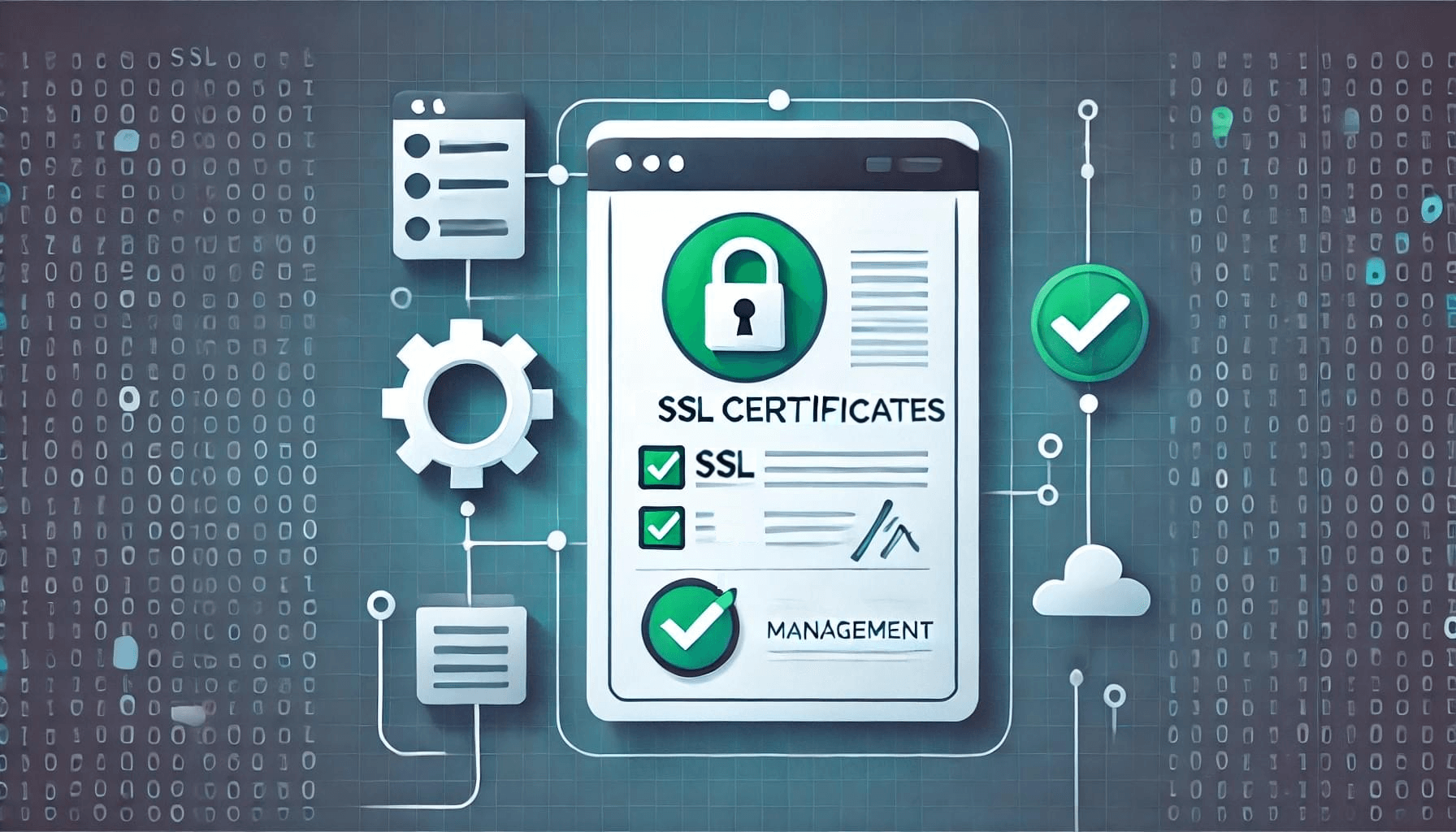SSL Certificate
Deploy an SSL certificate to enable HTTPS encryption of websites, trusted identity authentication and prevent against data leaks or tampering during transmission.
Get SSL Certificate >Blog > What is Certificate Lifecycle Management?
Tag:
Certificate Lifecycle Management
SSL/TLS Certificates
Digital Security
Automated Certificate Management
645:0
Eric ZhengFebruary 5 2025
In today's digital-first world, trust is the foundation of secure communication, and SSL/TLS certificates are the essential tools for building that trust. Whether you're securing websites, authenticating devices, or encrypting data, these certificates are the backbone of digital security. However, as businesses grow and digital systems expand, managing certificates effectively becomes a complex and resource-intensive task—90% of enterprises admit to experiencing outages due to expired certificates (Ponemon Institute, 2023).
This is where Certificate Lifecycle Management (CLM) comes into play. CLM refers to the comprehensive process of managing digital certificates, from request and issuance to monitoring, renewal, and eventual revocation. By automating and streamlining this process, organizations can avoid costly outages, reduce security risks, and improve operational efficiency.
In this article, we'll explore the basics of SSL/TLS certificates, discuss the importance of certificate lifecycle management, and break down the key stages of the certificate lifecycle. We'll also highlight how sslTrus CLM—a platform where security meets simplicity—can transform your certificate management practices with its powerful automation and centralized management capabilities.
Understanding SSL/TLS Certificates
SSL/TLS certificates are digital credentials used to secure communications between clients and servers. They provide encryption, authentication, and data integrity, ensuring that sensitive information remains private and trusted.
How SSL/TLS Certificates Work:
These certificates are issued by trusted Certificate Authorities (CAs), which verify the applicant's identity before signing and issuing the certificate. Once deployed, SSL/TLS certificates enable secure HTTPS connections, giving users confidence through the padlock icon in their browser's address bar.

What is Certificate Lifecycle Management?
Certificate Lifecycle Management (CLM) is the process of managing the entire lifecycle of digital certificates, ensuring they are issued, deployed, and maintained securely. The lifecycle begins with the request for a certificate and continues through issuance, monitoring, renewal, and eventual revocation.
Without proper CLM, organizations risk outages, breaches, and compliance violations. For example, in 2022, a Fortune 500 company faced a $3.6 million loss due to an expired certificate that halted its e-commerce platform for 12 hours.
Why Do We Need Certificate Lifecycle Management?
The 11 Stages of Certificate Lifecycle Management
1. Request
The lifecycle begins with a Certificate Signing Request (CSR), which is generated by the applicant and submitted to a trusted Certificate Authority (CA). The CSR includes key details about the applicant, such as the domain name, public key, and organizational information.
2. Validation
The CA validates the applicant's identity. This process ensures the certificate is issued only to legitimate entities. Validation can involve domain ownership checks, business verification, or email authentication, depending on the certificate type.
3. Issuance
After validation, the CA issues the certificate, signing it with their private key. This step confirms the certificate' s authenticity and prepares it for deployment.
4. Deployment
The issued certificate is deployed to the relevant endpoints—such as web servers, applications, or devices. Proper deployment includes configuring the certificate chain, ensuring root and intermediate certificates are correctly installed.
5. Discovery
Certificate discovery scans the network to identify all certificates in use, providing visibility into their configurations, expiration dates, and locations. Discovery prevents forgotten certificates from creating vulnerabilities.
6. Inventory
Organizing certificates into a centralized inventory allows administrators to group and manage them efficiently. For example, certificates can be categorized by department, purpose, or expiration date.
7. Monitoring
Continuous monitoring tracks certificate status, expiration dates, and potential configuration issues. Monitoring ensures no certificate is left unmanaged, preventing unexpected outages or security gaps.
8. Compliance Assessment
Regular assessments ensure certificates comply with regulatory standards and use secure configurations, such as strong encryption algorithms and proper key lengths.
9. Renewal
Traditionally, SSL/TLS certificates were valid for several years. However, industry trends and security best practices have shortened certificate lifetimes. Currently, certificates are valid for a maximum of 398 days, but proposals by major browser vendors, like Apple and Google, aim to further reduce validity to just 47 days.
This shift emphasizes the importance of automation in certificate renewal. Managing such frequent renewals manually is impractical for most organizations. sslTrus CLM automates the renewal process, ensuring certificates are updated on time without human intervention, eliminating the risk of service interruptions.
10. Revocation
Revocation is necessary when a certificate is compromised or no longer needed. For instance, if a private key is exposed, immediate revocation ensures that the certificate cannot be exploited.
In modern systems, revocation status is communicated dynamically. Tools like sslTrus CLM can automate the revocation process, ensuring certificates are promptly invalidated and replaced. This proactive approach minimizes downtime and mitigates risks associated with compromised credentials.
11. Auditing
Auditing tracks the lifecycle of each certificate, recording key events like issuance, renewal, and revocation. This transparency is essential for compliance and operational accountability.
Key Benefits of sslTrus CLM
sslTrus CLM isn't just a tool; it's your certificate security partner. Here's how we simplify CLM:
|
Feature |
Impact |
|
End-to-End Automation |
Auto-renewal, deployment, and revocation eliminate human error. |
|
Real-Time Monitoring |
Get alerts for expiring certificates or weak encryption (e.g., SHA-1). |
|
Compliance Guardrails |
Enforce policies like TLS 1.3-only certificates and 2048-bit+ keys. |
|
Role-Based Access Control(RBAC) |
Control who can issue, renew, or revoke certificates to enhance security. |
Simplify Your Certificate Management with sslTrus CLM
In today's interconnected world, Certificate Lifecycle Management is a must for ensuring secure, reliable, and compliant digital operations. As the complexity of managing certificates increases, automation becomes essential.
sslTrus CLM offers an all-in-one solution to streamline certificate management, from request to auditing. With its automated features, real-time monitoring, and centralized management capabilities, sslTrus CLM helps businesses reduce risks, save time, and maintain uninterrupted security.
In an era where a single expired certificate can cost enterprises an average of $2.1 million in downtime (Ponemon Institute, 2023), sslTrus CLM offers more than just automation — it delivers peace of mind. Ready to eliminate certificate-related risks?
RELATED
2025-02-25 14:33:23
2025-02-18 10:58:56
2025-02-14 14:41:07
2025-02-05 18:04:51
2025-01-20 14:47:16
Categories

Free SSL Tools
Top Posts
Comments